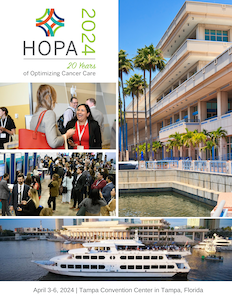Back
Trainee Research
Category: Malignant Hematology
(185) Pharmacokinetic Summary and Toxicities of Calaspargase Pegol in Pediatric Patients
Friday, April 5, 2024
12:00 PM – 2:00 PM ET

Milre Matherne, PharmD (she/her/hers)
PGY-2 Oncology Pharmacy Resident
St. Jude Children's Research Hospital
Thibodaux, Louisiana, United States
Presenting Author(s)
Poster Abstract:
Background:
Asparaginase products have become an integral part of pediatric acute lymphoblastic leukemia treatment contributing to improved outcomes. In clinical practice, serum asparaginase activity ≥ 0.1 IU/mL is considered sufficient for achieving asparagine depletion. As of December 2022, calaspargase pegol is the only pegylated asparaginase product available for pediatric patients in the United States. Current literature demonstrates calaspargase pegol maintains serum asparaginase activity 2.5 times longer than pegaspargase.
Objectives:
The primary objectives were to delineate the sustained asparaginase activity ≥ 0.1 IU/mL following administration of calaspargase pegol and describe the frequency of asparaginase-associated toxicities.
Methods:
This is a single institution, retrospective review of the pharmacokinetics and toxicities of patients who received calaspargase pegol from December 1, 2022 to September 30, 2023. A linear one-compartment model with Michaelis-Menten elimination was used to describe asparaginase activity over time. The individual post-hoc pharmacokinetic estimates were used to evaluate time above 0.1 IU/mL. Toxicities including pancreatitis, hyperbilirubinemia, hypertriglyceridemia, hypersensitivity reaction, and venous thromboembolism (VTE) were evaluated 8 weeks following each dose.
Results:
Thirty-two individuals with 111 asparaginase activity measures following 40 calaspargase pegol doses were included in the pharmacokinetic evaluation. Estimated time above 0.1 IU/mL was significantly lower in individuals with a hypersensitivity reaction (n=3) compared to those without a hypersensitivity reaction (n=29) (median (range): 1.7 (0.0, 9.6) vs 30.0 (4.5, >56) days; p=2e-4). Five desensitization doses were given to 4 individuals. Only one of the five doses was able to maintain activity ≥ 0.1 IU/mL longer than 10 days. Individuals without a hypersensitivity reaction who received 2500 IU/m2 were more likely to maintain activity ≥ 0.1 IU/mL for at least 21 days versus those who received between 1000 and 2000 IU/m2; (86% vs 57%; p=2e-4). Median age and BSA in the group who received between 1000 and 2000 IU/m2 compared to 2500 IU/m2 was 15.4 vs 5.4 years old and 2.24 vs 0.77 m2. Evaluation of toxicities involved 64 individuals with 104 calasparagase pegol administrations, revealing rates of toxicities: pancreatitis 10.9%, hypersensitivity reactions 9.4% and VTE 6.25%. Grade 3-4 hypertriglyceridemia occurred in 11 individuals (17.2%) and hyperbilirubinemia in 2 individuals (3.1%).
Conclusion:
Most individuals without hypersensitivity reactions receiving a 2,500 IU/m2 dose will maintain asparaginase activity ≥ 0.1 IU/mL at least 21 days while most individuals desensitized to calaspargase pegol were unable to maintain asparaginase activity ≥ 0.1 IU/mL for 10 days. Hypertriglyceridemia was the most common toxicity observed after calaspargase pegol administration.
References (must also be included in final poster): N/A
Background:
Asparaginase products have become an integral part of pediatric acute lymphoblastic leukemia treatment contributing to improved outcomes. In clinical practice, serum asparaginase activity ≥ 0.1 IU/mL is considered sufficient for achieving asparagine depletion. As of December 2022, calaspargase pegol is the only pegylated asparaginase product available for pediatric patients in the United States. Current literature demonstrates calaspargase pegol maintains serum asparaginase activity 2.5 times longer than pegaspargase.
Objectives:
The primary objectives were to delineate the sustained asparaginase activity ≥ 0.1 IU/mL following administration of calaspargase pegol and describe the frequency of asparaginase-associated toxicities.
Methods:
This is a single institution, retrospective review of the pharmacokinetics and toxicities of patients who received calaspargase pegol from December 1, 2022 to September 30, 2023. A linear one-compartment model with Michaelis-Menten elimination was used to describe asparaginase activity over time. The individual post-hoc pharmacokinetic estimates were used to evaluate time above 0.1 IU/mL. Toxicities including pancreatitis, hyperbilirubinemia, hypertriglyceridemia, hypersensitivity reaction, and venous thromboembolism (VTE) were evaluated 8 weeks following each dose.
Results:
Thirty-two individuals with 111 asparaginase activity measures following 40 calaspargase pegol doses were included in the pharmacokinetic evaluation. Estimated time above 0.1 IU/mL was significantly lower in individuals with a hypersensitivity reaction (n=3) compared to those without a hypersensitivity reaction (n=29) (median (range): 1.7 (0.0, 9.6) vs 30.0 (4.5, >56) days; p=2e-4). Five desensitization doses were given to 4 individuals. Only one of the five doses was able to maintain activity ≥ 0.1 IU/mL longer than 10 days. Individuals without a hypersensitivity reaction who received 2500 IU/m2 were more likely to maintain activity ≥ 0.1 IU/mL for at least 21 days versus those who received between 1000 and 2000 IU/m2; (86% vs 57%; p=2e-4). Median age and BSA in the group who received between 1000 and 2000 IU/m2 compared to 2500 IU/m2 was 15.4 vs 5.4 years old and 2.24 vs 0.77 m2. Evaluation of toxicities involved 64 individuals with 104 calasparagase pegol administrations, revealing rates of toxicities: pancreatitis 10.9%, hypersensitivity reactions 9.4% and VTE 6.25%. Grade 3-4 hypertriglyceridemia occurred in 11 individuals (17.2%) and hyperbilirubinemia in 2 individuals (3.1%).
Conclusion:
Most individuals without hypersensitivity reactions receiving a 2,500 IU/m2 dose will maintain asparaginase activity ≥ 0.1 IU/mL at least 21 days while most individuals desensitized to calaspargase pegol were unable to maintain asparaginase activity ≥ 0.1 IU/mL for 10 days. Hypertriglyceridemia was the most common toxicity observed after calaspargase pegol administration.
References (must also be included in final poster): N/A

